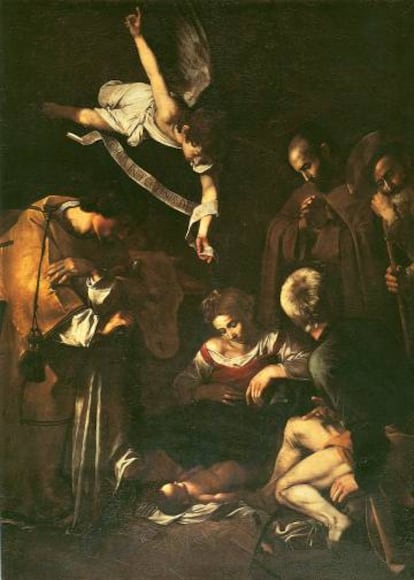The theft this Sunday of nine jewels from the collection of Napoleon and the Empress Eugenie de Montijo at the Louvre museum is the latest in a long list of incredible robberies to steal works of art. In fact, it is not the first time that the Louvre has suffered theft, starting with the theft of the mythical Mona Lisa.
The ‘Gioconda’, also in the Louvre. In 1911 the Louvre already suffered a spectacular robbery. A former employee, Vicenzo Peruggia, knowing that there were not many security measures, entered the building at seven in the morning on Monday, August 21, with the institution closed, climbed a ladder and took down the hook. Mona Lisa before leaving the facility with the treasure under his work coat. Those responsible did not realize until the next day. More than two years later, police caught Peruggia in Florence trying to sell the painting. By the way, this month marks the centenary of Peruggia’s death.
In 2021, two pieces of 16th-century armor stolen from the Louvre in 1983 were recovered and are now on display in the Art Objects room of the Richelieu wing. They are a burgundy-type helmet and an iron cuirass with relief decoration and gold inlays, manufactured in the Milan region in the second half of the 16th century. They were stolen on May 1, 1983, when the display case in which both works were displayed was discovered destroyed. They were recovered in 2021, when an antiques expert was hired to process an inheritance in Bordeaux, and the two pieces were in the lot.
Caravaggio’s ‘Nativity’ in Palermo (yes, it was the mafia). It happened in 1969. Two mafia hitmen entered the oratory of the parish of San Lorenzo in Palermo on a rainy night in October 1969 and when they left, the Nativity with Saint Francis and Saint Lawrence, by Caravaggio, a work valued at 20 million dollars, only the frame remained. The fabric had been torn off with a razor blade. In 2018, a repentant member of the Badalamenti clan, Gaetano Grado, explained before the Parliamentary Anti-Mafia Commission that the entire mafia leadership first gathered around the painting, in a gesture of showing off the prestige and power of which it was capable, and then took it abroad, fragmented into parts to sell on the black market. Don Tano Badalamenti told Grado that he had cut the fabric, measuring 2.68 meters by 1.97 meters, into six or eight parts to sell it on the clandestine market, according to his version.
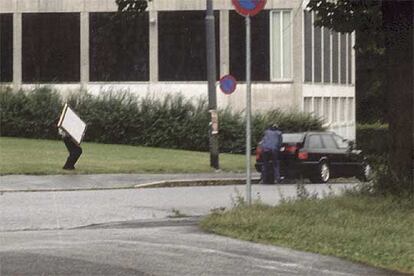
‘The Scream’, by Munch… twice (although not the same painting). On February 12, 1994, Paul Enger needed less than a minute to enter the National Gallery in Oslo and climb to the Munch Room with a wooden ladder. He opened the window, cut the cable holding The scream and fled. He took advantage of the fact that the Winter Olympic Games were being held and left a sign for the police: “Thank you for the lack of security.” The thief was arrested in a hotel with the work.
August 22, 2004 happened again with another version of The scream. At 11 in the morning two thieves entered the crowded room of the Munch Museum in Oslo, where hangings The scream and one Madonna by Munch. Both were recovered in 2006, although by then the damage that humidity had caused to the great expressionist icon – there are four versions – was already irreversible. Edvard Munch painted four versions of The scream between 1893 and 1910. The first is the piece owned by the National Museum of Art of Norway, and it is the most reproduced. Two versions rest in the Munch Museum in Oslo, one of which was the subject of this theft. The fourth painting, the only one not owned by the Norwegian Government, broke a record at Sotheby’s when it was acquired, at auction, in May 2012 for more than 98 million euros by the American investor Leon Black.

‘The adoration of the mystical Lamb’, the polyptych altarpiece by the Van Eyck brothers, one of the most stolen pieces in history. This masterpiece from 1432, a 3.5 meter high by 4.6 meter wide polyptych altarpiece on display inside Ghent Cathedral, has been the subject of looting, war booty and theft. First, in 1794, when Napoleonic troops took the central panel to be displayed in the Louvre. They returned it. In 1816, six boards were sold under strange circumstances. On April 10, 1934, two panels were stolen again by men in black who left a note: “Pris à l’Allemagne par le traité de Versailles.” One of the tables appeared, although the one John the Baptist Its whereabouts are still unknown (a copy is on display in the set). Finally, in 1942 Hitler took the polyptych on a whim. The Nazis hid it in a salt mine, and from there it was rescued by the Monument Men, the brigade of military art experts from the Allied side who recovered what they could from the Nazi looting.

Thirteen masterpieces stolen in Boston, including a ‘vermeer’. It is considered the biggest robbery in history. In the mid-eighties, a wave of assaults began in Boston, linked to two sides of the local mafia. A member of one of these groups tried to carry out a robbery in broad daylight in the middle of that decade at the Isabella Stewart Gardner museum, but did not succeed, although it did highlight the security problems of the institution. This leads us to March 18, 1990, when 13 masterpieces signed by Vermeer, Rembrandt, Manet and Degas were stolen from the museum. A couple of individuals dressed in police uniforms and fake mustaches broke into the center at dawn. They tied up the guards and walked through the rooms for 81 minutes. The theft of the century in the art world might not have happened if a series of terrible coincidences had not occurred. The main one was that the oldest night watchman was not working that night. “He wouldn’t have let the police couple (in disguise) in,” said a worker at This is a robbery: The biggest art theft in the world, a Netflix series about that theft. Among the pieces they took The concertby Vermeer, still considered the most valuable lost work of art in the world today. The reward offered for returning it is nine million euros, the largest in history. The museum keeps the empty frames on display.
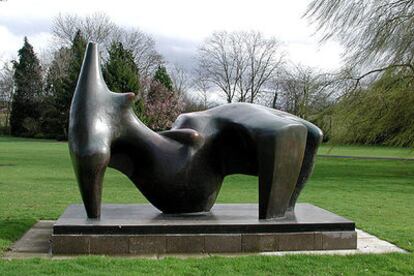
The missing Henry Moore sculpture in north London. On a night in December 2005, a gang robbed A Reclining Figure (A prone figure) (1969-1970), by Henry Moore. The theft is surprising because the piece measured 3.5 meters in length and, above all, weighed 2.1 tons. The bronze sculpture was stolen from the gardens of the Henry Moore Foundation (in the town of Much Hadham, Hertfordshire, north of London) by three thieves-workers. It took 10 minutes to get the piece, with the help of a truck and a crane. The work has never been recovered and is believed to have been melted down.
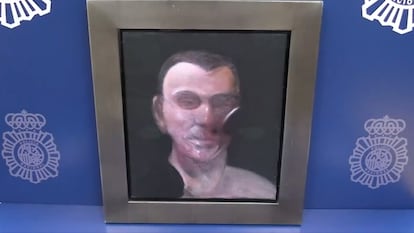
The ‘bacons’ stolen in Madrid. The robbery occurred in the summer of 2015 at the home of José Capelo, a friend of Francis Bacon, in Plaza de la Encarnación, next to the Senate, in one of the safest areas of Madrid. The thieves took five portraits that the Irish painter had given to his friend as an inheritance and that decorated his master bedroom. The oil paintings are valued at 30 million euros. Tres of them were recovered in 2017 and a quarter, in 2024. The gang that carried out the robbery was made up of an art dealer, peristas and jewelers from the Rastro de Madrid, as well as an Uber driver. Since 2015, the five paintings have passed through different hands in failed attempts to sell them. And so they were able to recover little by little. The last one was found after the arrest in February 2024 of two people responsible for keeping the two stolen paintings that remained to be located. The fifth is still missing.
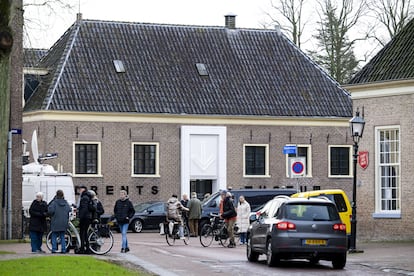
The Cotofenesti gold helmet and three other Dacian pieces, in Holland. Last January, specifically on Friday the 24th, four archaeological masterpieces from Romania were stolen from the Drents Museum in Assen. The robbery also added a spectacular detail: explosives were used. The stolen pieces were the Cotofenesti gold helmet (discovered in 1928, it is made of solid gold, weighs about 770 grams and is almost intact except for the calota, the part that covers the cranial vault) and three female bracelets of the same metal, which were part of an exhibition of more than 50 pieces dedicated to the ancient kingdom of Dacia, which was about to be closed. Around 3:45 in the morning, there was a loud explosion. The shock wave broke the glass of several windows and surrounding buildings were also damaged. As the police explained in a press conference the next morning, there were “several people involved and the robbery was well prepared.” From Romania, Ernest Oberlander-Tarnoveanu, director of the National Museum of History in Bucharest, then hoped that the objects would be returned. “It’s my only hope. They are so important that it is impossible to sell them.” Nothing more is known since then.

